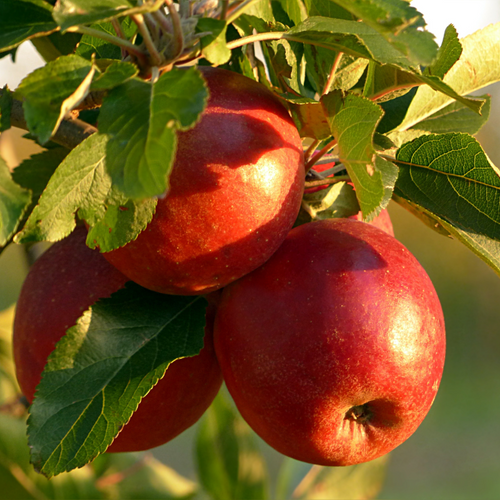Part 1: General
1. What is the microbiota?
The microbiota defines a community of microorganisms colonizing the human body. Humans have co-evolved with microbes in the environment, and each body habitat has a unique set of microorganisms in its microbiota. The entire microbiota present in the human body is made up of more than 38,000 billion cells, or 0.3% of the total body weight¹. The greatest concentrations of microbes occupy the intestine, the skin and the oral cavity, and among the different microbiota, that of the digestive tract contains the most microorganisms in terms of number and species ¹ ². Indeed, the intestinal microbiota is made up of more than a thousand species of microorganisms, such as viruses, bacteria and fungi ³⁻⁶. First identified as disease vectors during the 20th century ⁷⁻⁸, it is now established that certain microorganisms are not only commensal, that is to say they colonize the body without causing any wrong, but above all symbiotic with their host: they are beneficial to the proper functioning of the body ⁹.
2. What is the role of the microbiota?
In the intestine, the microbiota is involved in a large number of functions essential to the proper functioning of the body. It is thus involved in major essential functions such as nutrition, development, immunity and well-being ¹⁰ ⁻¹² . The intestinal microbiota is essential for the breakdown of food, for the synthesis of vitamins and biomolecules useful to the body, for the absorption of fatty acids, calcium and magnesium ⁶ ¹³ , but also for the proper functioning of immune defenses, major systems that govern the human body, etc.
3. How does the microbiota evolve over the course of a lifetime?
Each individual has a distinct and unique population of microorganisms in their environment ¹⁴ , even if we have strains in common between individuals. Furthermore, the microbiota is not constant over the course of a lifetime; its composition actually fluctuates significantly with age and in response to certain changes (food, health, behavior, etc.). The intestinal flora is constantly exposed to different elements which can change its composition, whether it is diet, ingested medications such as antibiotics, or disease-carrying pathogens for example. A change in our lifestyle can lead to changes in the intestinal microbiota, as has been established in the case of physical activity ¹⁵ . The influence of lifestyle on the intestinal microbiota is therefore well proven and important. Comparing the microbiota of populations from industrialized countries with that of contemporary populations still living in a traditional way highlights a different functional role of the microbiota between these two types of population. For example, the microbiota will no longer degrade the same elements ingested, the functional modification of the activity of the microbiota seeming linked to a loss of diversity of bacterial species ¹⁶ ¹⁷.
4. What are the risk factors for an unbalanced microbiota?
If we focus so much on the importance of a healthy microbiota, it is because it can be deteriorated in its composition, we observe an imbalance in its composition of microorganisms: an increase in strains pathogenic and/or a reduction in beneficial strains. When this imbalance is too great, we then speak of dysbiosis. This alteration of the intestinal flora can have minimal consequences, such as mild intestinal problems, but also much more serious health concerns: in fact, research is finding more and more compromising links between dysbiosis and obesity ¹⁸ , hypertension ¹⁹ , depression ²⁰ , etc.
The underlying mechanisms and manifestations of dysbiosis remain unclear: the risk factors and consequences of this state are numerous. Among the main risk factors, we find stress, certain inflammatory diseases, certain metabolic disorders and certain drug treatments² ¹ .
A genetic factor must also be taken into account in the etiology of dysbiosis. But one of the most important factors remains diet, and sudden changes in diet. Indeed, the largely industrialized diet that we know today has a large share of responsibility in the appearance of dysbiosis: preservatives, additives, endocrine disruptors, pesticides, unreasonable macronutrient intakes, etc. All these factors have an influence on the constitution of our intestinal microbiota. Finally, alcohol and tobacco are once again non-negligible risk factors ²² ,²³ .
But one of the reasons that can endanger the composition of one's intestinal microbiota throughout one's life is its poor constitution during childhood. Indeed, good habits must be adopted if you want your child to benefit from an optimal microbiota in the future.
Part 2: The importance of childhood in the constitution of the microbiota
1. How do humans constitute their microbiota?
From the first seconds of life, we shape our different microbiota. Indeed, we come into contact with surrounding micro-organisms from birth. In vaginal delivery, for example, newborns encounter all types of microorganisms in their mother's vagina, and in contact with the hospital environment: this is the first step in the formation of the microbiota. Studies have also highlighted a link between the composition of the intestinal flora and the mode/place of delivery, which subsequently impacts the risk of atopic manifestations ²⁴ . Other factors come into play during birth to facilitate the proper constitution of the child's microbiota, in particular contact with the parents' skin and breastfeeding, which allows some probiotic bacteria to be transmitted. Breast milk also contains some fiber with a prebiotic effect. But it is important to ensure that good habits are multiplied throughout childhood. Among them, for example, is exposure to pets, which allow the child to come into contact with a multitude of new microorganisms and strengthen their intestinal flora. Research has also highlighted the importance of limiting the administration of antibiotics, that is, limiting their use to when it is actually necessary²⁵ .
Once again, diet plays a vital role. From birth, the feeding method will have an impact on the composition of the child's intestinal flora. Researchers agree that breastfeeding will have a beneficial impact on the child's microbiota, compared to formula feeding ²⁶ .
Good dietary diversification, controlled and varied, during childhood, will allow each individual to build up a solid intestinal microbiota.
Some studies tend to demonstrate that alterations in the child's intestinal microbiota could be linked to previous alterations in the maternal microbiota during, or even before childbirth ²⁵ .
The major problem regarding children's microbiota remains the risk factors to which they are exposed. This greatly endangers the smooth development of their microbiota, and weakens their resistance to future pathologies. One of the best indicators of this situation remains the increasing prevalence of certain pathologies. In fact, allergies (skin, respiratory, and generalized) affect 25-30% of the world population. While this figure did not exceed 3% in 1970, it should be around 50% in 2050 according to the World Health Organization ³⁵ . Another telling figure concerns viral intestinal infections. In France, acute viral gastroenteritis is increasingly common and 90% of children under 2 years old have already been subject to it . The smooth progress of the constitution of the microbiota of children is slowed down these days and it is therefore wise to turn to solutions.
2. What solutions can help your child benefit from an optimal microbiota?
Some studies have demonstrated the beneficial effect of dietary fiber and prebiotics to modulate the intestinal microbiota of children. For example, the addition of oligosaccharides and other prebiotics to infant formula has resulted in a bifidogenic effect and a reduction in pathogens. Other prebiotics increase the levels of Bifidobacteria, this is the case of inulin ²⁷ .
When it comes to probiotics, some research highlights the effectiveness of certain strains in treating certain conditions. However, the study mentioned below highlights that caregivers must take into account the specificity of strains depending on diseases when advising child probiotic supplementation. In this study, for example, effectiveness on acute infectious diarrhea was demonstrated for the strains Lactobacillus rhamnosus GG and Saccharomyces boulardii I-745 . With regard to infantile colic, Lactobacillus reuteri DSM has been shown to be more effective, and in the treatment of irritable bowel syndrome, we would prefer to recommend Lactobacillus rhamnosus GG . The study mentions interesting results regarding the treatment of necrotizing enterocolitis, food allergies and non-alcoholic fatty liver disease by supplementation with probiotics ²⁸.
Probiotic supplementation could also prove to be a solution to overcome growth problems in children living in developing countries and/or in situations of undernutrition. A systematic review of the literature was carried out and published in 2015. In it, five out of twelve studies highlighted the beneficial effects of probiotic supplementation on the growth of children. These five studies were all carried out on populations of children from developing countries: 4 studies were carried out on undernourished children, and one on well-nourished children. The other 7 studies were carried out in developed countries: no significant effect on growth was found. The results therefore suggest that probiotics have the potential to improve the growth of children prone to undernutrition. However, additional research must be undertaken ²⁹ .
Regarding skin pathologies, such as atopic dermatitis, commonly called eczema, a recent study has verified the benefits of probiotics. Even if the administration of probiotics only before or after birth did not result in a significant reduction in the incidence of dermatitis, the combined use of probiotics prenatally and postnatally significantly reduced the incidence of this disease ³ ⁰ .
But research does not only focus on physical health, psychological disorders are also studied. Researchers have also highlighted a link between dysbiosis and autism spectrum disorder (ASD): there is numerous evidence establishing a link between alterations in the composition of the intestinal microbiota and neurobehavioral symptoms in children with ASD ³ ¹ . We therefore investigated whether probiotics could play a role in treating ASD symptoms in children. A study from 2018 concluded that these microorganisms had beneficial effects on the behavioral manifestations of the pathology, among others, and they would therefore be recommended as adjuvant treatment ³ ² . Other research highlights a favorable effect of taking probiotics from childhood on reducing the risk of developing attention deficit hyperactivity disorder (ADHD) ³³ .
Finally, and more generally, probiotic supplementation at a young age seems to stimulate the immune system. In a 2019 study, researchers demonstrated an increase in the production of certain players in the immune response, when the child (under 2 years old) followed probiotic treatment ³⁴ .
BIBLIOGRAPHY
[1] Sender, R., Fuchs, S. & Milo, R. Revised Estimates for the Number of Human and Bacteria Cells in the Body. PLoS Biol 14 , (2016).
[2] Pei, Z. et al. Bacterial biota in the human distal esophagus. Proc Natl Acad Sci USA 101 , 4250–4255 (2004).
[3] Gerritsen, J., Smidt, H., Rijkers, GT & de Vos, WM Intestinal microbiota in human health and disease: the impact of probiotics. Genes & Nutrition 6 , 209–240 (2011).
[4] Lagier, J.-C. et al. Culture of previously uncultured members of the human gut microbiota by culturomics. Nature Microbiology 1 , 16203 (2016).
[5] Ley, RE, Lozupone, CA, Hamady, M., Knight, R. & Gordon, JI Worlds within worlds: evolution of the vertebrate gut microbiota. Nat Rev Microbiol 6 , 776–788 (2008).
[6] Lozupone, CA, Stombaugh, JI, Gordon, JI, Jansson, JK & Knight, R. Diversity, stability and resilience of the human gut microbiota. Nature 489 , 220–230 (2012).
[7] Pasteur, L. Remarks on Anthracic Vaccination as a Prophylactic of Splenic Fever. Br Med J 1 , 489 (1882).
[8] Koch, R. Die Aetiologie der Tuberkulose. in Beiträge zur Biologie der Pflanzen vol. Bd. 2, Heft 2 (Robert Koch-Institut, 1876).
[9] Xu, J. & Gordon, JI Honor thy symbionts. Proceedings of the National Academy of Sciences 100 , 10452–10459 (2003).
[10] Archie, EA & Theis, KR Animal behavior meets microbial ecology. Animal Behavior 82 , 425–436 (2011).
[11] McFall-Ngai, M. et al. Animals in a bacterial world, a new imperative for the life sciences. Proc Natl Acad Sci USA 110 , 3229–3236 (2013).
[12] Rakoff-Nahoum, S., Paglino, J., Eslami-Varzaneh, F., Edberg, S. & Medzhitov, R. Recognition of commensal microflora by toll-like receptors is required for intestinal homeostasis. cell 118 , 229–241 (2004).
[13] Brown, JM Eating to boost gut microbial diversity. Science Translational Medicine 8 , 369ec198 (2016).
[14] Meadow, JF et al. Humans differ in their personal microbial cloud. PeerJ 3 , e1258 (2015).
[15] Petriz, BA et al. Exercise induction of gut microbiota modifications in obese, non-obese and hypertensive rats. BMC Genomics 15 , (2014).
[16] Iebba, V. et al. Eubiosis and dysbiosis: the two sides of the microbiota. New Microbiol 39 , 1–12 (2016).
[17] Zaneveld, JR, McMinds, R. & Vega Thurber, R. Stress and stability: applying the Anna Karenina principle to animal microbiomes. Nat Microbiol 2 , 17121 (2017).
[18] Amabebe, E., Robert, F., Agbalalah, T. and Orubu, E., 2020. Microbial dysbiosis-induced obesity: role of gut microbiota in homoeostasis of energy metabolism .
[19] Yang, T., Santisteban, M., Rodriguez, V., & Gong, M. (2015). Gut Dysbiosis Is Linked to Hypertension .
[20] Capuco, A., Urits, I., Hasoon, J., & Chun, R. (2020). Current Perspectives on Gut Microbiome Dysbiosis and Depression.
[21] Weiss, G. and Hennet, T., 2017. Mechanisms and consequences of intestinal dysbiosis .
[22] Inserm, 2022. Intestinal microbiota (intestinal flora). A serious avenue for understanding the origin of many diseases.
[23] David, L., Maurice, C., Carmody, R., Gootenberg, D., Button, J., Wolfe, B., Ling, A., Devlin, A., Varma, Y., Fischbach, M., Biddinger, S., Dutton, R. and Turnbaugh, P., 2014. Diet rapidly and reproducibly alters the human gut microbiome .
[24] Van Nimwegen, F., Penders, J., Stobberingh, E., Postma, D., Koppelman, G., Kerkhof, M., Reijmerink, N., Dompeling, E., van den Brandt, P. , Ferreira, I., Mommers, M. and Thijs, C., 2011. Mode and place of delivery, gastrointestinal microbiota, and their influence on asthma and atopy .
[25] Kim, H., Sitarik, A., Woodcroft, K., Johnson, C. and Zoratti, E., 2019. Birth Mode, Breastfeeding, Pet Exposure, and Antibiotic Use: Associations With the Gut Microbiome and Sensitization in Children .
[26] Savage, J., Lee-Sarwar, K., Sordillo, J., Lange, N., Zhou, Y., O'Connor, G., Sandel, M., Bacharier, L., Zeiger, R ., Sodergren, E., Weinstock, G., Gold, D., Weiss, S. and Litonjua, A., 2018. Diet during Pregnancy and Infancy and the Infant Intestinal Microbiome .
[27] Davis, E., Dinsmoor, A., Wang, M. and Donovan, S., 2020. Microbiome Composition in Pediatric Populations from Birth to Adolescence: Impact of Diet and Prebiotic and Probiotic Interventions .
[28] Sansotta, N., Peroni, D., Romano, S., Rugiano, A., Vuilleumier, P. and Baviera, G., 2019. The good bugs: the use of probiotics in pediatrics .
[29] Onubi, O., Poobalan, A., Dineen, B., Marais, D. and McNeill, G., 2015. Effects of probiotics on child growth: a systematic review .
[30] Li, L., Han, Z., Niu, X., Zhang, G., Jia, Y., Zhang, S. and He, C., 2019. Probiotic Supplementation for Prevention of Atopic Dermatitis in Infants and Children: A Systematic Review and Meta-analysis .
[31] Fattorusso, A., Di Genova, L., Dell'Isola, G., Mencaroni, E. and Esposito, S., 2019. Autism Spectrum Disorders and the Gut Microbiota .
[32] Shaaban, S., El Gendy, Y., Mehanna, N., El-Senousy, W., El-Feki, H., Saad, K. and El-Asheer, O., 2018. The role of probiotics in children with autism spectrum disorder: A prospective, open-label study .
[33] Rianda, D., Agustina, R., Setiawan, E. and Manikam, N., 2019. Effect of probiotic supplementation on cognitive function in children and adolescents: a systematic review of randomized trials .
[34] Kusumo, P., Bela, B., Wibowo, H., Munasir, Z. and Surono, I., 2019. Lactobacillus plantarum IS-10506 supplementation increases faecal sIgA and immune response in children younger than two years .
[35] Insert. (2016). Allergies. An increasingly frequent disruption of the immune system.



















